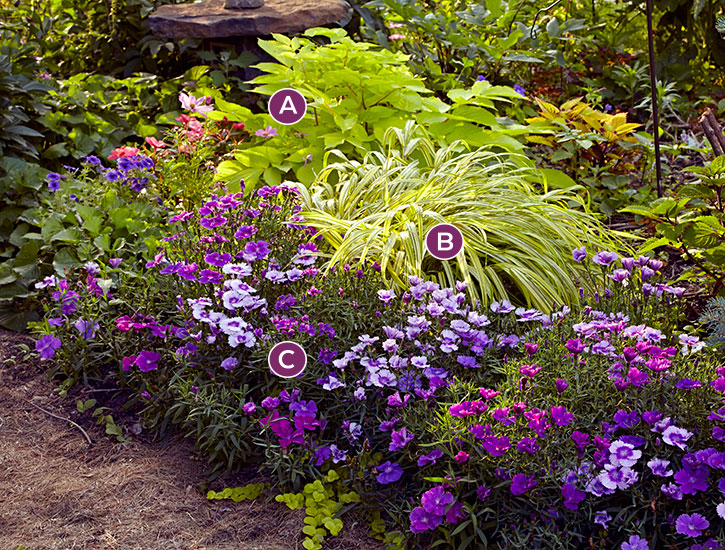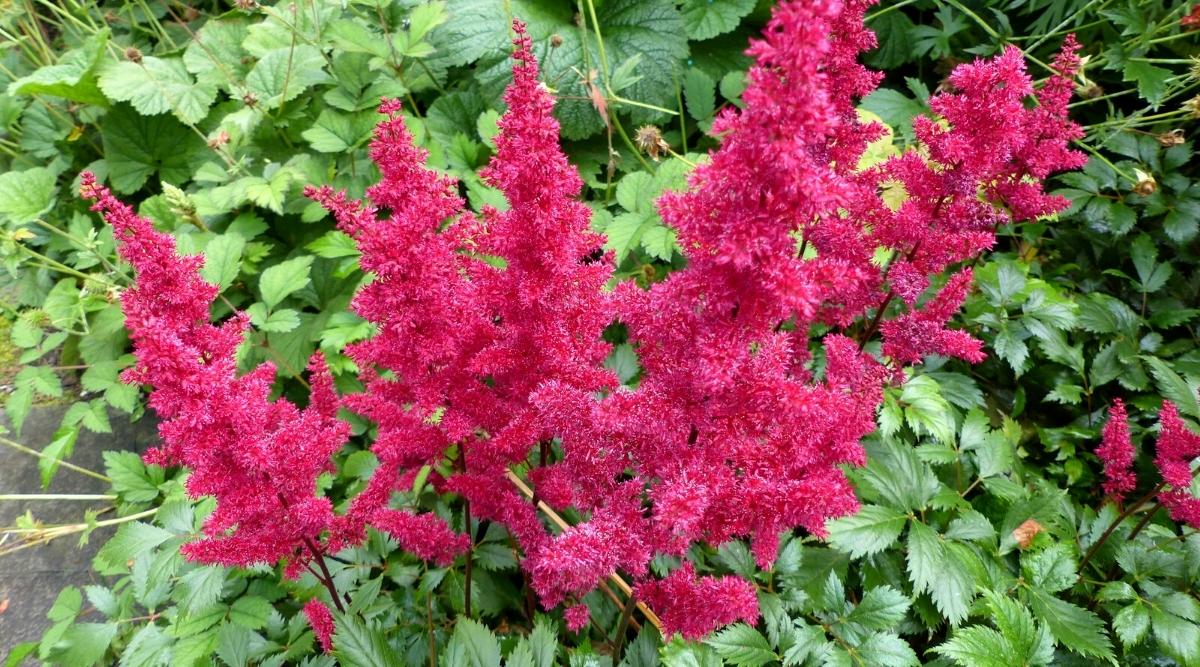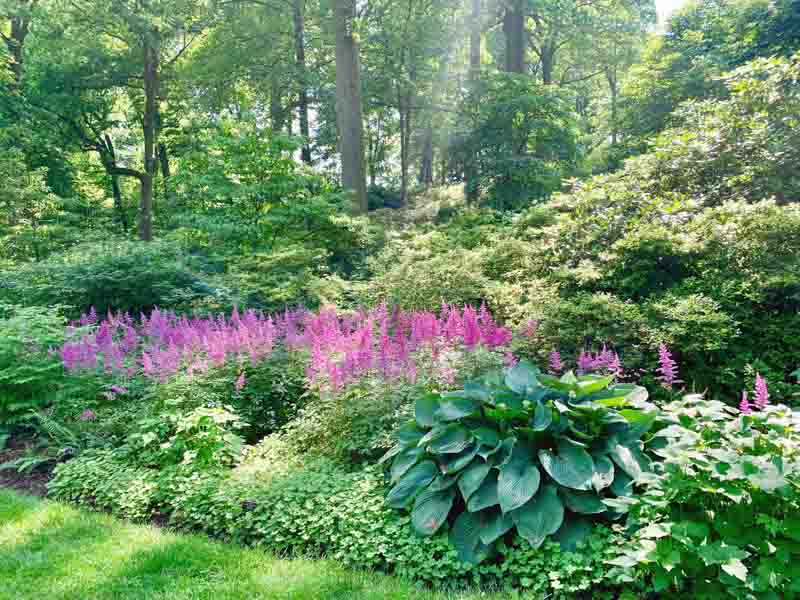Imagine stepping into your own peaceful sanctuary, a cool haven filled with lush greenery and vibrant blooms. If you live in Zone 6, you’re in luck.
Shade gardens are not only possible, but they can also be incredibly rewarding. You might think that a shady spot in your yard limits your gardening options. However, with the right plants and a bit of planning, you can transform these areas into stunning displays of color and texture.
Curious about how to make the most of those shaded parts of your garden? Keep reading to discover the secrets to creating a shade garden that will make you the envy of your neighborhood. Whether you’re a seasoned gardener or just starting out, these tips will help you bring your dream garden to life. Are you ready to unlock the potential of your shade garden? Let’s dive in.

Credit: www.gardengatemagazine.com
JUMP TO TOPIC
Ideal Shade Garden Conditions
Creating a shade garden in Zone 6 requires specific conditions to thrive. Shade gardens offer a cool retreat, filled with lush greens and delicate blooms. Identifying the ideal conditions ensures your shade garden flourishes, providing beauty and tranquility.
Understanding Zone 6 Climate
Zone 6 experiences cold winters and warm summers. Temperatures range from -10°F to 0°F in winter. Summers can be hot, with temperatures reaching up to 90°F. This climate supports a variety of shade-loving plants. Plants must withstand cold and thrive in summer heat.
Types Of Shade In Gardens
Shade gardens can vary in the amount of sunlight they receive. Full shade areas receive less than three hours of direct sun daily. Partial shade areas get three to six hours of sunlight. Dappled shade areas have sun filtered through tree canopies. Each type supports different plant species.

Credit: www.epicgardening.com
Top Plants For Shade Gardens
Shade gardens in Zone 6 offer a unique opportunity. They allow you to create a lush, green retreat. With the right plants, these gardens can thrive. The secret? Choosing plants that love the shade. Below, explore top choices for your shade garden.
Perennials That Thrive
Perennials return every year, bringing life to your garden. Hostas stand out with their large, green leaves. They handle deep shade well. Another favorite is the Bleeding Heart. It boasts delicate, heart-shaped flowers. Ferns also thrive in shaded areas. Their feathery leaves add texture.
Shade-loving Shrubs
Shrubs provide structure and height. Hydrangeas are a popular choice. They bloom with big, colorful flower heads. Azaleas are another option. Their spring flowers are vibrant and eye-catching. Rhododendrons also enjoy shady spots. They offer evergreen foliage year-round.
Groundcovers For Shaded Areas
Groundcovers fill in spaces and prevent weeds. Sweet Woodruff is a classic. It has small white flowers and fragrant leaves. Another choice is Pachysandra. It creates a carpet of green. Vinca, with its blue flowers, adds a splash of color. These plants spread easily.
Annuals For Seasonal Color
Annuals bring fresh color each season. Impatiens are a popular choice. They bloom in many colors and love shade. Begonias offer beautiful flowers and foliage. They thrive in containers or garden beds. Coleus adds bright foliage with unique patterns.
Designing Your Shade Garden
Designing a shade garden in Zone 6 can be rewarding. It offers a cool, tranquil space in your yard. Focus on plant selection and placement. With the right design, your garden will thrive even in the shade.
Layering Plants For Depth
Layering gives your garden a lush look. Start with tall trees or shrubs. These provide the upper canopy. Underneath, add medium-sized plants. Fill in with ground covers. This arrangement mimics nature’s layers. It creates a sense of depth and fullness.
Incorporating Texture And Color
Shade gardens don’t have to be dull. Use plants with varied leaf shapes and sizes. Hostas offer broad leaves. Ferns bring delicate fronds. Mix in flowering plants for color. Astilbes and impatiens work well in shade. Their colors pop against green backgrounds.
Creating Focal Points
Focal points draw the eye and add interest. Use a unique plant or a garden feature. A birdbath or statue can be a great choice. Place it where paths meet or at a view’s end. This gives structure to your garden design.
Maintenance Tips
Caring for shade gardens in Zone 6 involves regular watering and mulching to retain moisture. Choose shade-tolerant plants like hostas and ferns, ensuring they receive adequate nutrients. Prune and clean up debris to prevent pests and diseases, keeping your garden healthy and vibrant.
Creating a lush shade garden in Zone 6 can be a rewarding endeavor, but keeping it healthy requires regular maintenance. If you’re wondering how to make your shade garden thrive, paying attention to key details like soil health, watering, and grooming can make all the difference. With a bit of dedication, your garden can become a serene retreat that you’ll enjoy year-round. Here are some practical maintenance tips to ensure your shade garden remains vibrant and healthy.Soil And Mulching Practices
The foundation of any thriving garden lies in the soil. Shade plants often prefer rich, well-draining soil to prevent root rot. You might consider adding organic matter like compost to enhance soil fertility and structure. Mulching is equally important. A 2-3 inch layer of mulch can help retain moisture, suppress weeds, and regulate soil temperature. Opt for organic materials like shredded bark or leaf mold to enrich the soil as they decompose. Regularly check the soil pH to ensure it suits the plants you’ve chosen. Some plants thrive in slightly acidic soil, while others prefer neutral ground.Watering Strategies
Watering a shade garden can be tricky. Overwatering can lead to problems like root rot, but under-watering can leave your plants stressed. It’s crucial to find a balance. Consider the natural rainfall in your area and adjust your watering accordingly. During dry spells, water deeply but less frequently to encourage roots to grow deeper. Use a soaker hose or drip irrigation to deliver water directly to the roots, minimizing evaporation. Avoid watering the foliage to prevent fungal diseases.Pruning And Grooming
Pruning is not just for aesthetics; it helps your plants grow better. Remove dead or diseased branches to allow light and air to penetrate the foliage, which is especially crucial in shady areas. Regular grooming keeps your garden tidy. Trim back any overgrown plants to maintain their shape and encourage new growth. Keep an eye out for pests or signs of disease. Early intervention can prevent a small issue from becoming a big problem. Do you have a favorite tool for grooming your garden? Investing in quality equipment can make this task more enjoyable and effective. By focusing on these maintenance tips, you can transform your shade garden into a vibrant oasis. With the right attention, your garden can become a personal retreat that provides joy throughout the seasons. Remember, a little effort goes a long way in ensuring your shade garden thrives.Common Challenges
Shade gardens in Zone 6 face unique challenges. These gardens require special care to thrive. Understanding common issues is key to success. Shade-loving plants need specific conditions. Addressing these challenges can help your garden flourish.
Dealing With Pests
Pests love shade gardens. Slugs and snails are frequent visitors. They feast on tender leaves. Keep an eye out for these invaders. Use barriers to protect your plants. Diatomaceous earth can deter these pests. Encourage natural predators. Birds and frogs can help control pest populations.
Managing Moisture Levels
Shade gardens often struggle with moisture. Too much water causes root rot. Plants may suffer from fungal diseases. Ensure proper drainage. Elevate plant beds if necessary. Water plants deeply but less often. This encourages strong root systems. Mulch can help retain soil moisture.
Preventing Disease
Disease can impact shade gardens. Powdery mildew is a common threat. It appears as white spots on leaves. Good air circulation is vital. Space plants appropriately. Remove infected leaves promptly. Choose resistant plant varieties. Regularly inspect plants for signs of illness.

Credit: www.gardenia.net
Enhancing Your Shade Garden
Creating a thriving shade garden in Zone 6 requires selecting plants that flourish with less sunlight. Consider hostas and ferns for their lush foliage. Enhance your garden with strategically placed stepping stones to add visual interest and accessibility.
Enhancing your shade garden can transform a quiet, dim corner of your yard into a tranquil oasis. You might think shade gardens are limited, but they offer unique opportunities to get creative. Let your imagination run wild as you add features that bring charm and functionality to your space. ###Incorporating Pathways
Imagine strolling through your shade garden on a winding path, the gentle crunch of gravel underfoot. Adding pathways is not just about convenience—it’s about inviting exploration. Choose materials like stone, mulch, or brick to define your garden’s layout. Paths guide visitors through your garden, highlighting your favorite plants and features. They can also prevent soil compaction around sensitive root systems. Think about how you want people to move through your space and let that guide your design. ###Adding Garden Art
Garden art is a fun way to express your personality and add visual interest. Pieces like sculptures, wind chimes, or birdbaths can create focal points that draw the eye. Consider materials that complement the natural tones of your garden. Does your shade garden have a theme? Whether it’s whimsical or sophisticated, choose art that supports your vision. Don’t be afraid to mix styles—sometimes a surprising contrast can create a delightful effect. ###Lighting For Ambiance
Lighting can extend your garden’s usability into the evening, creating a magical atmosphere. Solar lights are an eco-friendly option that require no wiring. Use them to illuminate pathways, highlight art, or cast gentle glows on your favorite plants. Consider the mood you want to set. Soft, warm lights create a cozy feel, while cooler tones can offer a modern touch. What areas would you love to see lit up after dusk? Enhancing your shade garden is a chance to make it uniquely yours. With thoughtful additions, your garden will not only look beautiful but also feel welcoming and personal. What will you add first?Frequently Asked Questions
What Plants Thrive In Shade Gardens Zone 6?
In Zone 6 shade gardens, consider hostas, ferns, and astilbes. These plants adapt well to limited sunlight and cooler climates. Additionally, consider planting bleeding hearts, lungwort, and hellebores for added variety. These species enhance the garden’s beauty while thriving in shaded conditions.
How To Improve Soil For Shade Gardens?
To improve soil in shade gardens, add organic matter like compost. This enriches soil fertility and drainage. Consider using mulch to retain moisture and suppress weeds. Regularly test soil pH and adjust as needed. Proper soil preparation ensures healthy plant growth in shaded areas.
Can Vegetables Grow In Zone 6 Shade Gardens?
Yes, some vegetables grow in Zone 6 shade gardens. Leafy greens like spinach and lettuce thrive with limited sunlight. Consider planting root vegetables like carrots and radishes. These vegetables adapt well to partial shade, providing fresh produce even in low-light conditions.
How Much Sunlight Do Shade Gardens Need?
Shade gardens typically receive less than four hours of direct sunlight. They thrive in dappled or partial shade. Choose plants that tolerate low-light conditions. Monitor sunlight patterns to ensure plants receive adequate light throughout the day.
Conclusion
Creating a beautiful shade garden in Zone 6 is achievable. Choose plants that thrive without direct sunlight. Ferns, hostas, and astilbes are great choices. They bring color and texture. Remember to water them well. Mulch helps retain moisture. Consider soil quality too.
Good soil boosts plant health. Shade gardens offer a cool retreat. They become a peaceful escape. Enjoy the variety of colors and shapes. With these tips, your garden will thrive. Happy gardening!
